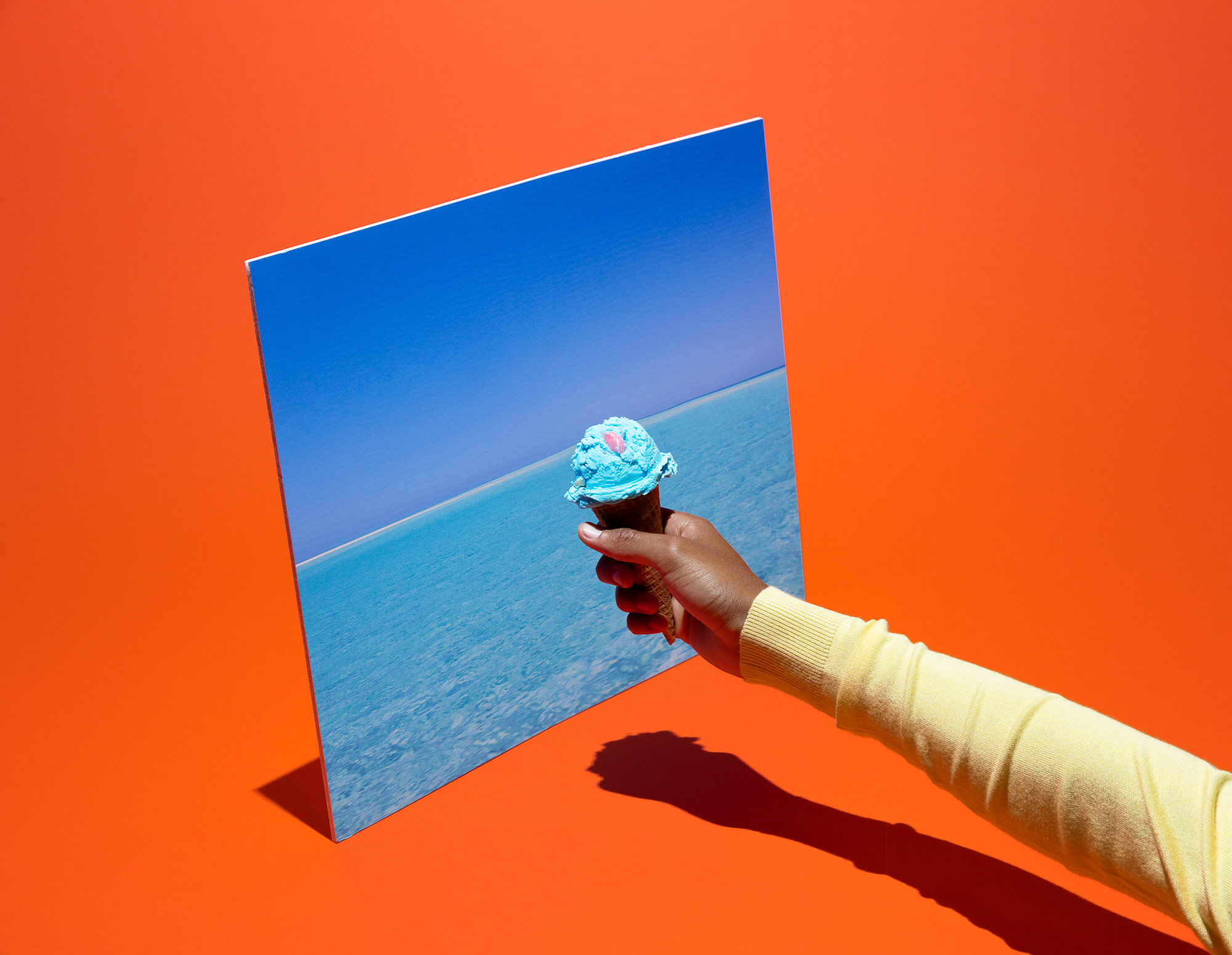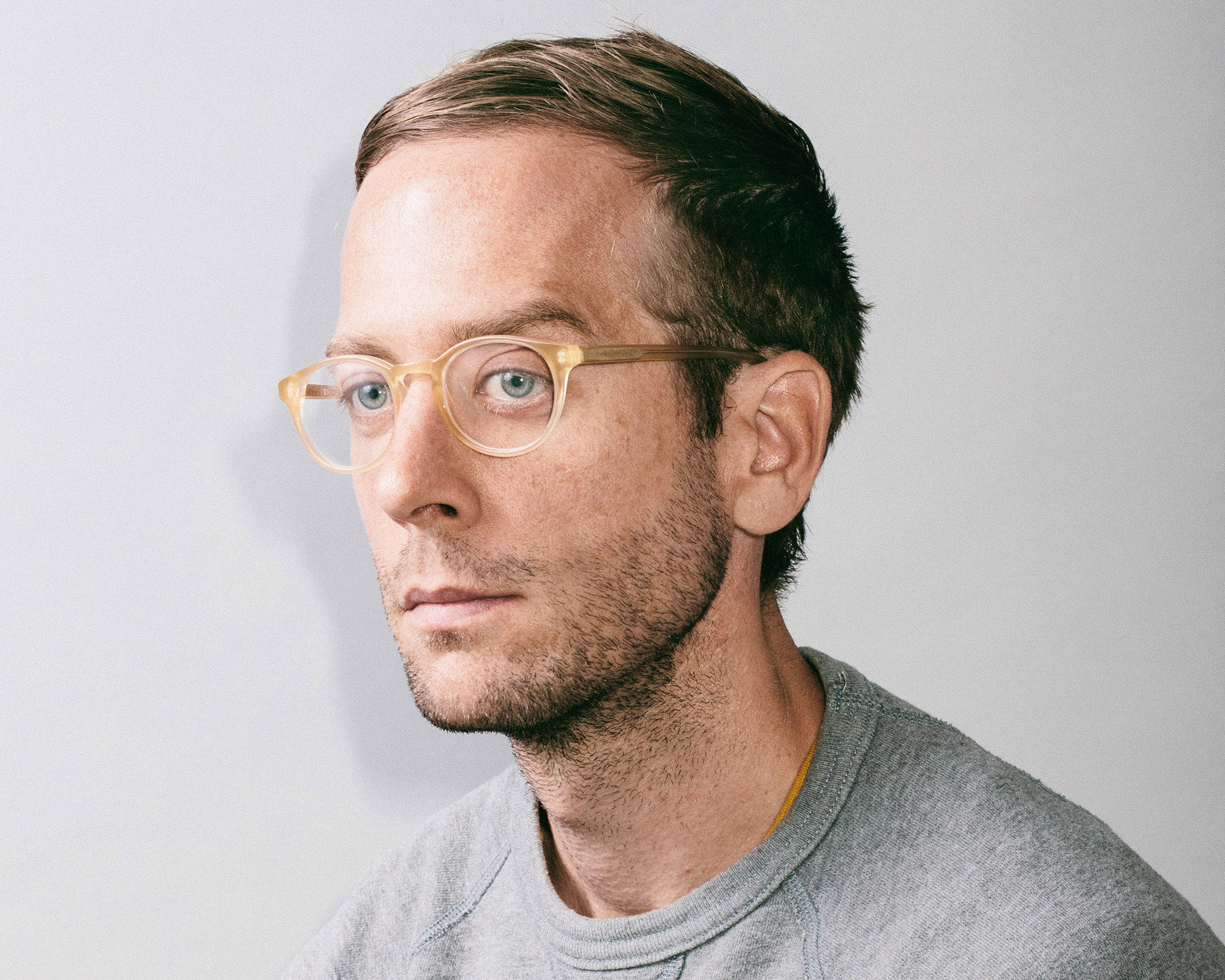
- Interview by Tammi Heneveld July 26, 2016
- Photo by Andy J. Scott
Jonpaul Douglass
- photographer
- director
Jonpaul Douglass is an LA-based commercial photographer and director who has worked with brands like Facebook, Apple, Microsoft, Disney, Skittles, Adult Swim, the NBA, and Budweiser, just to name a few. He became widely known with his 2014 photo series, Pizza in the Wild, and continues to develop his experimental and dynamic style in his personal and professional practice.
Tell me about your path into photography. I’ve been doing photography for about 11 years, but I’ve gone through a lot of different creative phases to get to this point.
My interest in photography started because of skateboarding. I grew up in Florida, and skateboarding was my life in high school. I didn’t care about anything else. Unfortunately, I tore my ACL twice, so I had to find another way to express my creativity.
Around 2005, I saw a friend photographing close-ups of rocks and shells on the beach. They were black-and-white macro shots, and I thought they were beautiful. I became interested in photography and bought an SLR. I took photos of everything from people’s dogs to family members and put the photos up on Flickr.
I became hooked on photography as a way of creating things quickly, and I liked how I could capture things with just my eyes. Once I got to college, I realized that photography gave me an immediate gratification that other things I was interested in, like design, couldn’t.
Did you originally plan to be a designer? Yeah. When I was in college, I became obsessed with vintage t-shirts. I soon realized that there were people who made a living selling vintage t-shirts on eBay, so I sold mine, too. I was dumbfounded that I could buy one for $1 at a thrift store and sell it for $30 to $50. As that continued, I recognized that people put their own designs on t-shirts and sold them, so I did that. I could kind of draw, so I made 12 designs, bought a crazy amount of blank American Apparel shirts, made a website, and started my own little company.
Once the shop opened, I thought, “Wait, I don’t want to be a t-shirt salesman!” The part I enjoyed about the whole process was creating the designs and website—I wanted to make the assets for the company, not be the company. So I shut down my t-shirt business and enrolled in the design program at University of South Florida.
It was around that same time that I took an interest in photography and reconsidered being a designer. There wasn’t a photography program nearby, so I moved to Orlando and tried film school. That’s where my interest in photography really took off. I found out about off-camera lighting after discovering a blog called Strobist, which got me into using strobes off-camera and making snippets of film scenes. I did about a year of film school in Orlando, but once I discovered off-camera lighting, I dropped out and started doing photography.
In 2007, I gained the attention of a photography representative who liked my work. That came as a surprise because I was doing it for fun. She told me it looked like professional-quality advertising photography and began representing me shortly after that. This was a couple years after I’d first picked up a camera, but I started doing commercial jobs, shooting for lots of bands, and making a living that way.
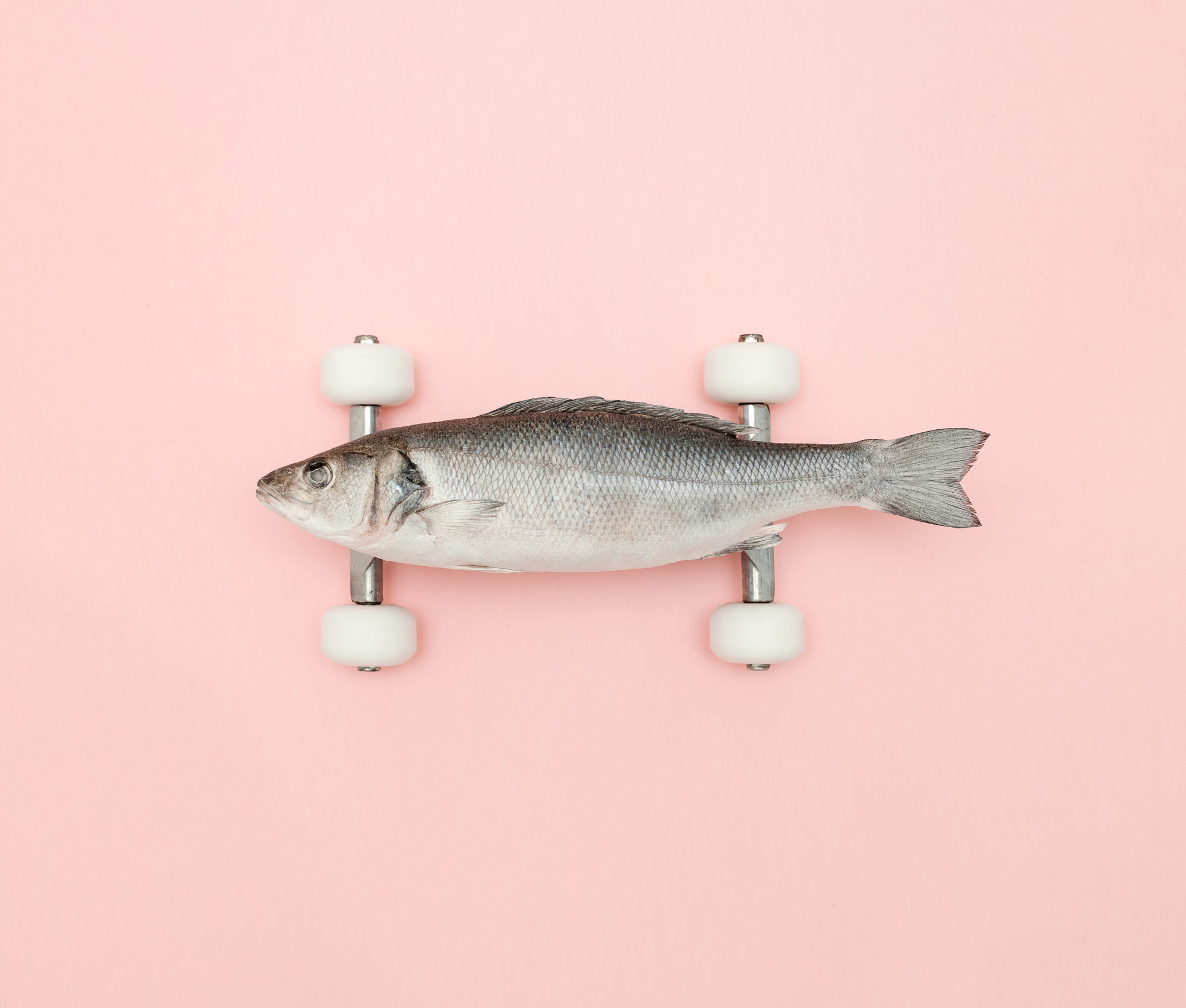
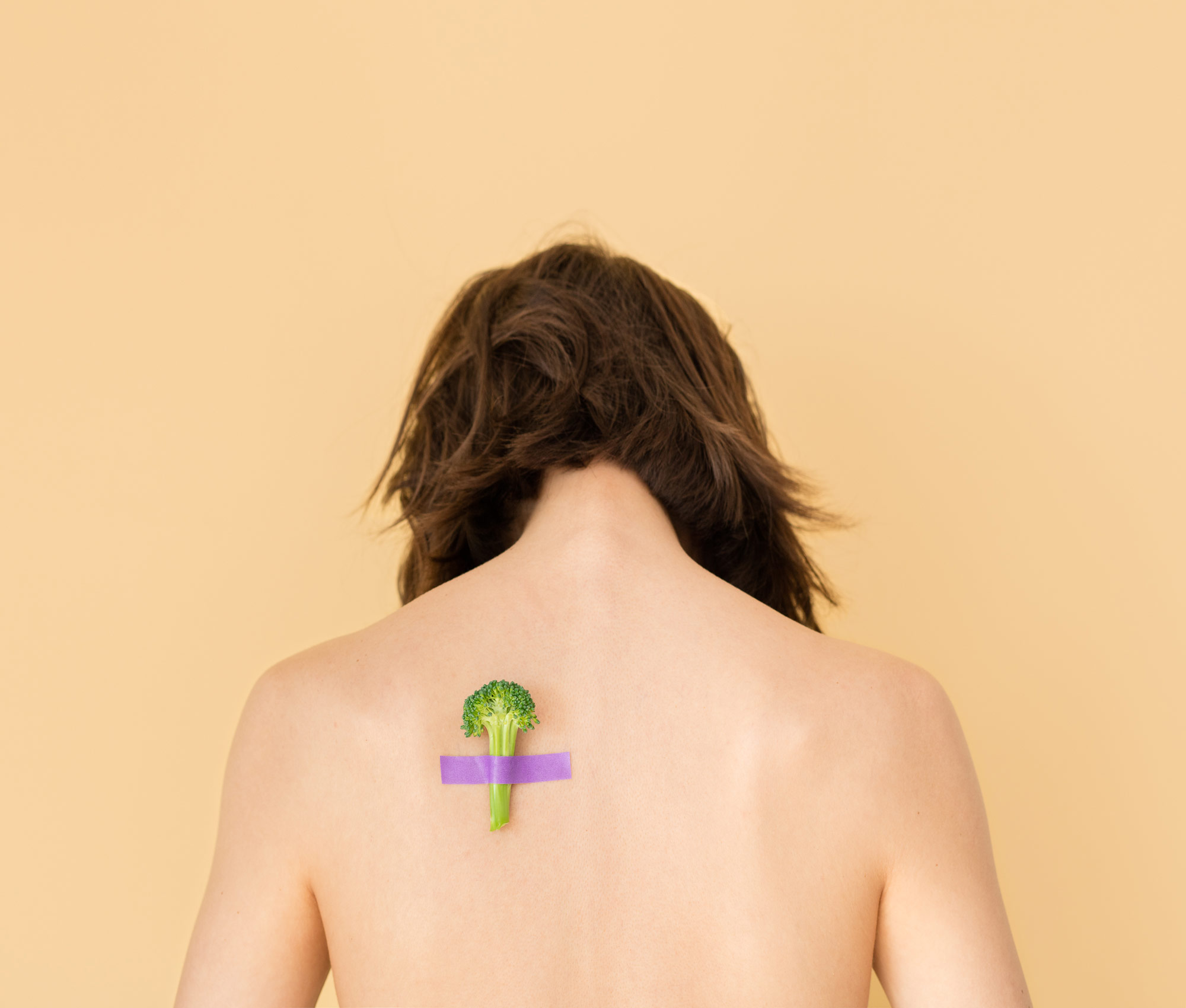
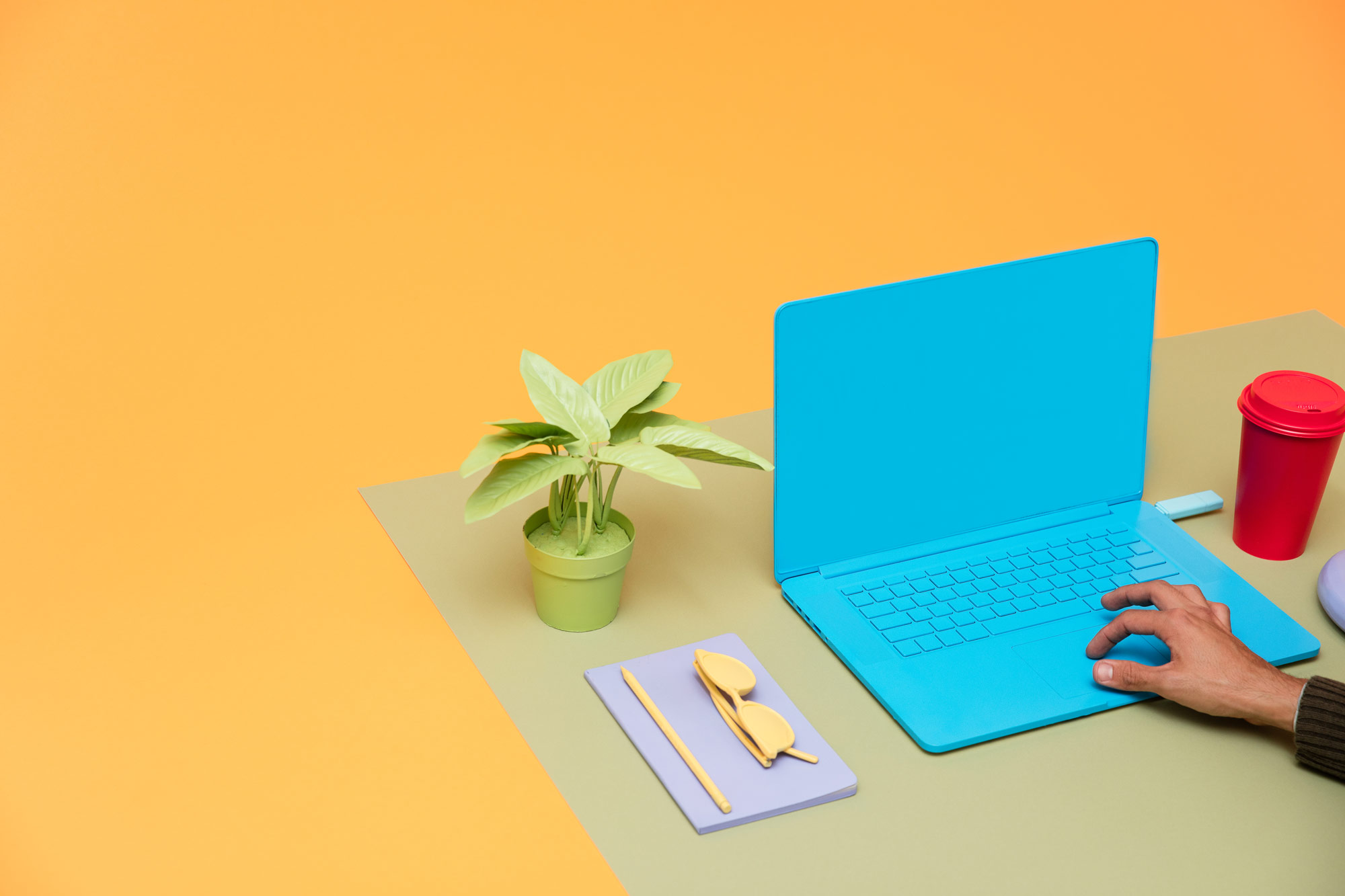
Had you been working other jobs to support yourself prior to photography? Yes. During school in Tampa, I worked at Progressive Insurance’s Claims Loss Reporting Unit, which is a call center. I worked there for four years throughout school, and I was the worst employee—I had no business doing that job. I was supposed to be empathetic, but after a few years, I was only using about 10% of my brain to work—the other 90% was being used to look at photography on the internet. Eventually my boss said, “You’re terrible, but I’m going to give you the chance to quit,” so I did. Once I quit, I immediately moved into photography and did little $300 to $500 gigs here and there, which was amazing to me.
As my career advanced, I became established in Orlando and did gigs for local companies. There wasn’t a lot of work to go around, so I took what I could get. I shot weddings on the side and did lifestyle work. You have to do that stuff in the beginning to get your name out there and make a living.
Around 2013, my wife and I decided to move to LA. At that time, my work had gone into more of a lifestyle direction because that’s what was hot at the time in the advertising industry. Once we settled in LA, I started to work with bigger and bigger clients. I got my foot in the door because friends of mine from Orlando went on to become designers or art directors for big companies in LA, and they remembered me.
Moving to LA was also when I began sharing my work on Instagram, which led to the next phase of my career. I did a personal series called Pizza in the Wild, and it became really popular.
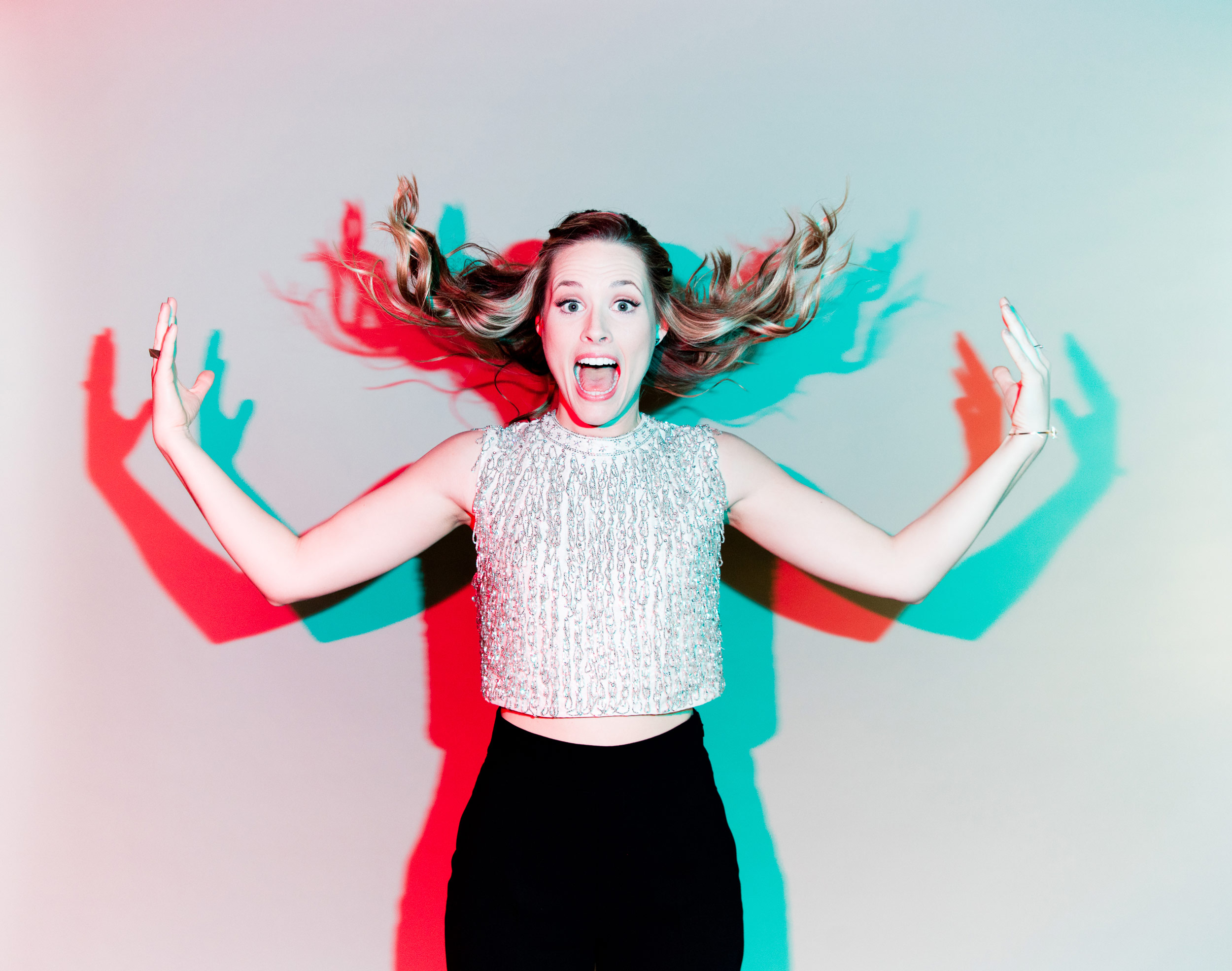
“I started the Pizza in the Wild project purely out of passion and a sense of humor…It was a perfect mashup of art and funny meme, so someone interested in art or design could appreciate it, but someone who liked to look at silly things on the internet could appreciate it, too.”
I love those photos! How did that project come about? I wasn’t working a lot during my first year in LA, so I had free time. For a creative person, there is nothing greater than having free time to come up with and execute new ideas.
In LA, you can see something crazy around every corner. I wasn’t used to that, and it was inspiring. One day on the way to a skate park near my house, I saw a wall of graffiti that had been whitewashed, except one piece of graffiti of a pepperoni pizza right in the middle. I thought, “Wouldn’t it be funny if there were pepperoni pizzas in different parts of LA?” I started the Pizza in the Wild project purely out of passion and a sense of humor. Some of my friends had free time, too, so they helped me pose pepperoni pizzas to photograph all over town.
I had posted about 25 or 30 pizza photos on my Instagram before news publications began contacting me, and it blew up. The internet really connected with the project. It was a perfect mashup of art and funny meme, so someone interested in art or design could appreciate it, but someone who liked to look at silly things on the internet could appreciate it, too.
I had a fairly normal commercial photographer career up until Pizza in the Wild and now I’m in a post-Pizza place. I don’t know if I’ll ever be able to create something like that again. I feel like this Instagram influencer thing is going to pass, which I’m looking forward to. I don’t like it when people contact me saying, “Hey, you’re the guy who makes the silly pizza photos on Instagram, right?” I’m not offended by it, but there’s much more to my work than that.
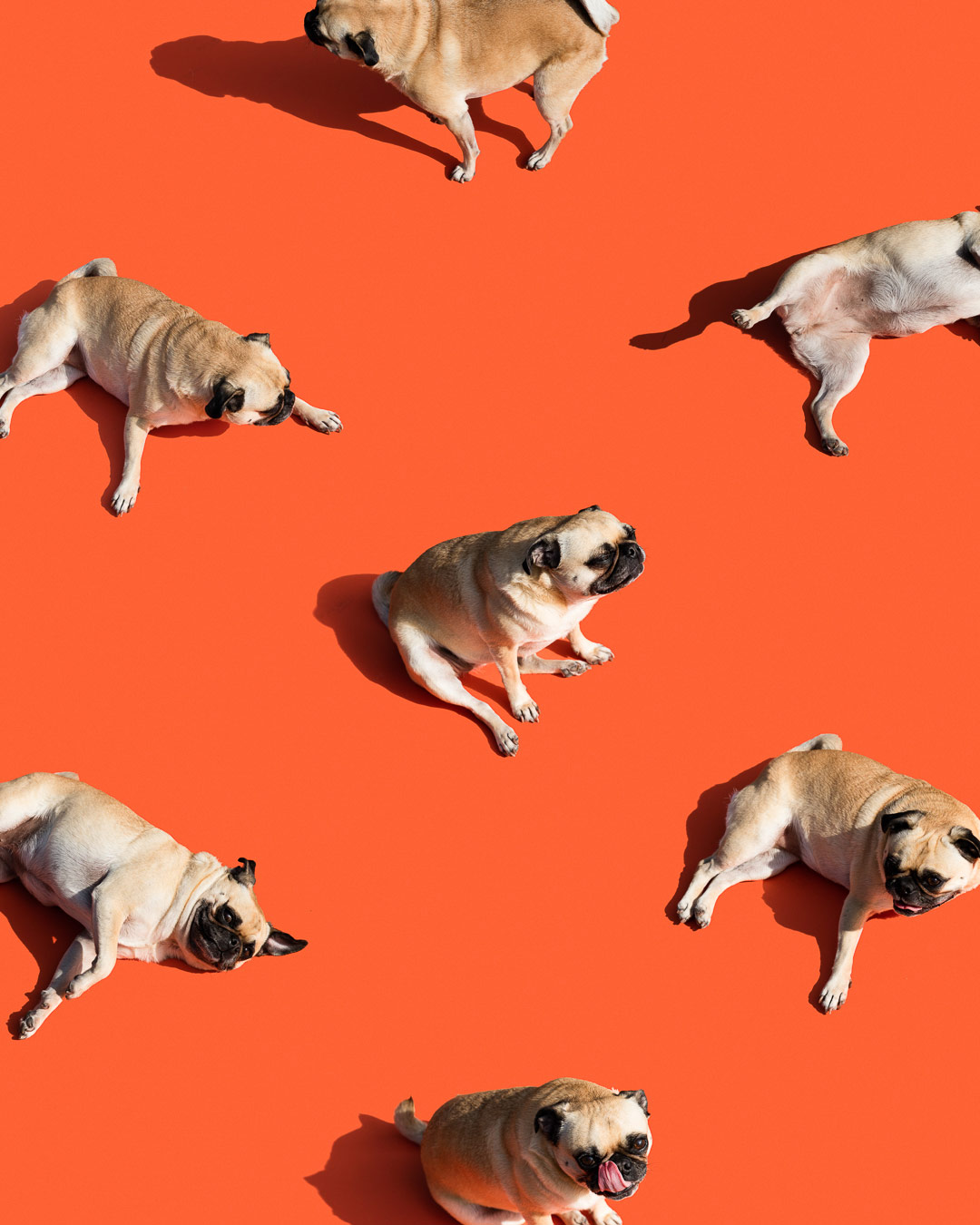
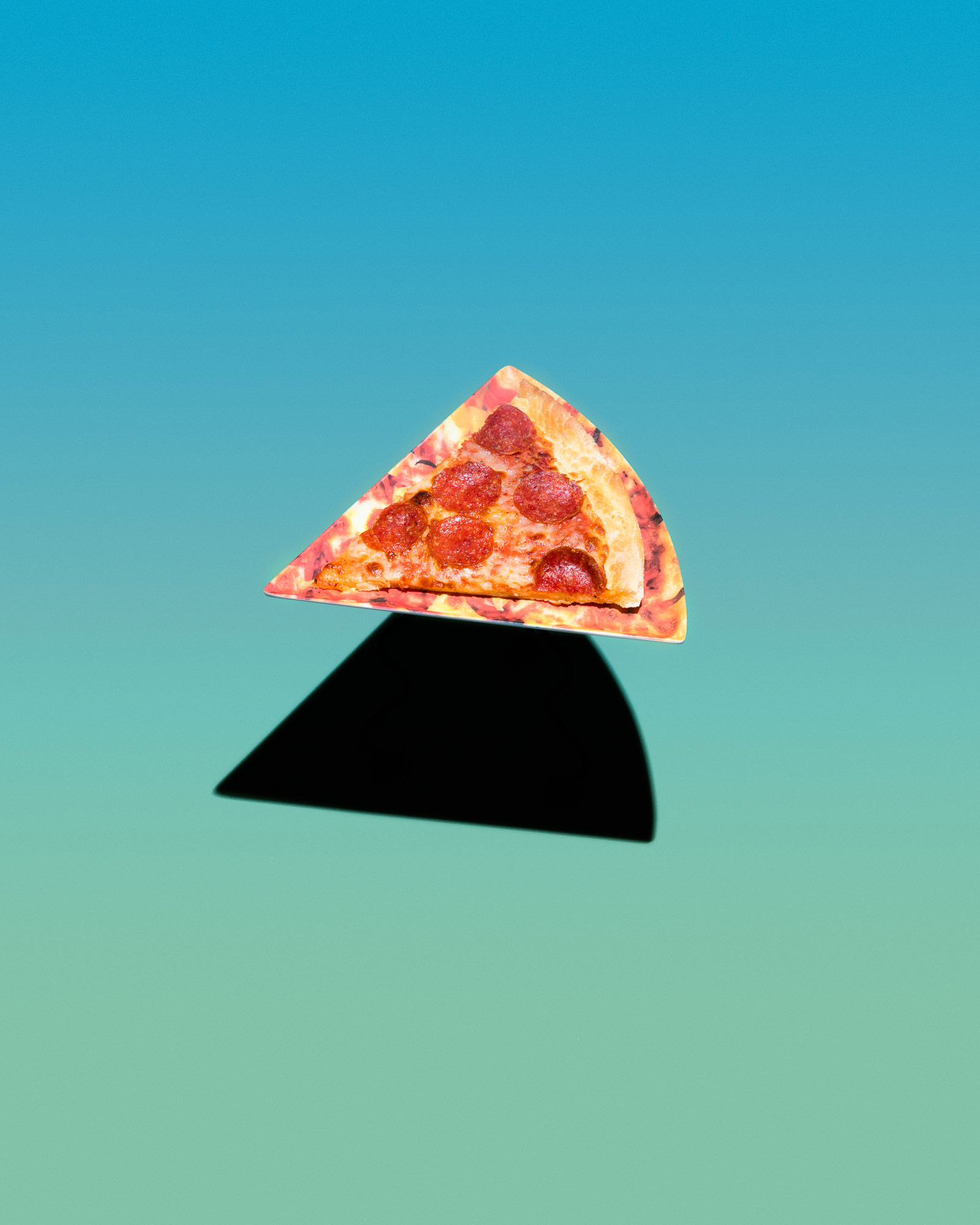
Is it challenging to continue to diversify your style once you become known for a series, like you did with Pizza in the Wild? At this point, I’ve gone through so many stages of photography that I can emulate a lot of styles. Emulating other styles to deliver a good product to a client came out of a necessity to make a living from photography for so long. From when I started in 2006 up until 2012, if an agency said, “We need to you make something like this,” I said, “Okay.”
However, at this stage of my career I’m very much in the camp of wanting to be hired to do what I’m exploring in my personal work. Now I’m getting contacted for stuff with a lot of creative in it, because that’s what I’m into. I ask myself, is this gig going to give me a chance to come up with a creative solution and execute that solution in the way I want? If something doesn’t seem like a good fit for me, I say, “No, there’s somebody else out there who would be better for this.” All of my work is diverse. If you go back into the archives of my blog or Instagram, you can see what I can do, but that doesn’t necessarily mean I want people to reach out to me to do that type of work anymore.
You’re a director as well as photographer. How did you get into directing and do the two practices influence each other? Once the Canon 5D Mark II came out, I was met with the question: “You can do video now, right?” I said, “Yeah, I guess I can.” The first videos I made were so bad. It took a lot of practice and failure to figure it out.
Back in Orlando, I had assisted a guy who did big commercials, and I learned all sorts of stuff about making commercials and using bigger, more complex cameras. Lighting for film and photography is much different: in my opinion, it’s much easier with photography, especially when you use strobes that can overpower the sun. But with film, you have to bring in extra gear, big lights, and a crew. It’s so much more work.
Over time, I learned how to do both, so I’m comfortable in either environment. I definitely prefer photography, because I think it’s simpler: you need less people, and you’re working one frame at a time as opposed to trying to capture performances. Photographers also have Photoshop, of course, whereas in film, it’s better to have everything completely dialed in so that there’s less work in post-production.
As for directing, I believe anybody with a strong opinion and strong sensibilities can be a director. If you’re confident in what you want to create, then you can direct. I’ve worked as a DP (director of photography) on projects, so I’ve been around a lot of directors. I’ll happily direct something because, in my opinion, it’s easy. A lot of times you’re not even doing the work, not operating a camera or anything. The advantage is that I can also operate a camera, so I can DP and direct.
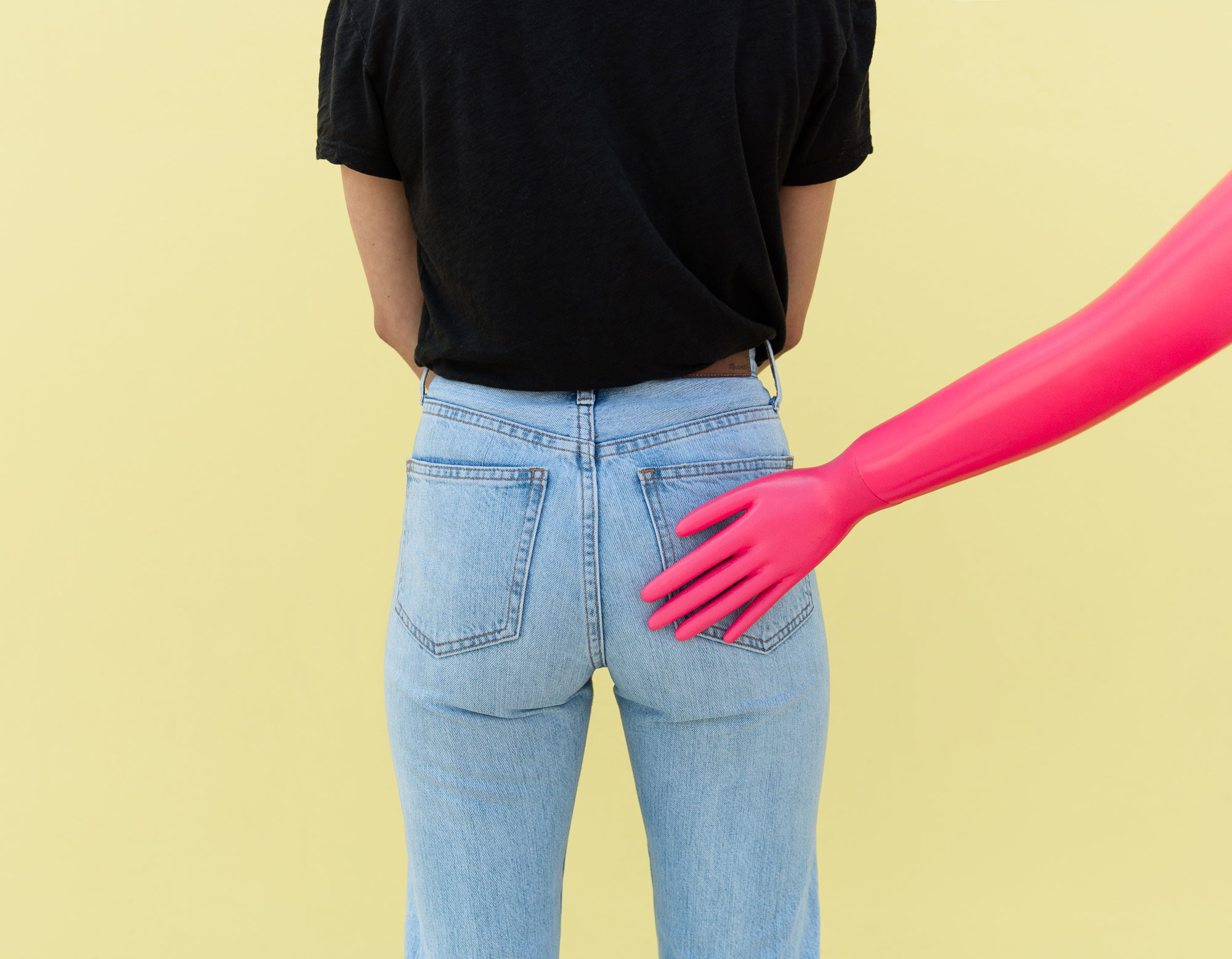
“I never want to be the guy who’s so obsessed with work that he forgets what’s really important. Those are the things that make you well-rounded and keep you inspired.”
What advice would you give to somebody starting out in photography? That’s a tough one. A lot of people start out by liking cameras and get confused in thinking that all you need is a nice camera to go out and take nice pictures that look like screensavers of pyramids or sunsets or mountains. In my opinion, a lot of those types of photos are right place, right time situations. It’s not that I don’t appreciate photos like that, but I think what’s important is knowing what you’re interested in before you get started. Taking a photo is the easy part—it’s more important to have taste, style, and a strong vision. It’s not about thinking, “I like taking pictures, so I’m going to be a photographer.” That’s how I started, and it took me a really long time to develop my own creative vision.
Yeah, it’s about more than technical knowledge. Right. Having a creative voice is the real challenging, and it took me a long time to figure that out. I’ve jumped through many different styles over the years. My portfolio kind of has a cohesive feel because I’ve always been particular about composition and subject matter, but just barely. Knowing what you like and sticking with it is important. Even when I was emulating different styles of photography, I was still trying to show my style. Even though I was hardly ever hired to do it, I stuck with that style as my voice. That’s what I wanted to shoot and who I wanted to be.
And at this point in your career, that’s more of what you’re moving towards. Yes, it has taken me a long time to get to this point, and there was a lot of work involved. I feel very fortunate and it keeps me humble. I still think the fact people want to pay me to create things with cameras is amazing. I’m very lucky.
Now, I’m finally at the point where about 80% of the projects I’m hired for are closely related to my personal style and what I put on Instagram. I still have the occasional commercial gig where I ask myself, “Why am I doing this?” But you have to play the game sometimes. It all has to do with work-life balance now: keeping myself sane, giving myself time to relax, and making time for my wife and our family. I never want to be the guy who’s so obsessed with work that he forgets what’s really important. Those are the things that make you well-rounded and keep you inspired.
“Out in LA, there’s so much going on. People come out to chase their dreams and do their thing. Being surrounded by that is very motivating because it makes you want to keep up.”
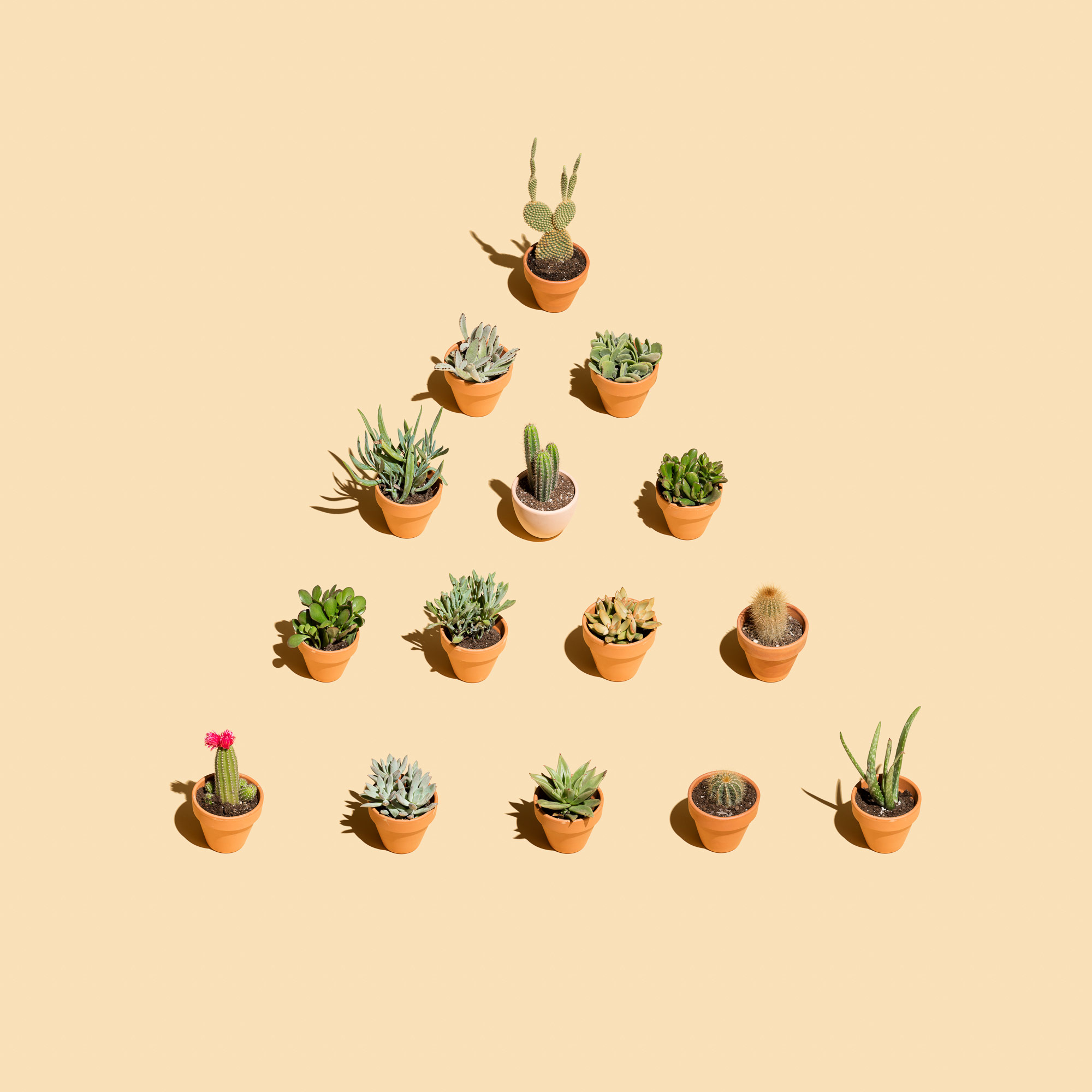
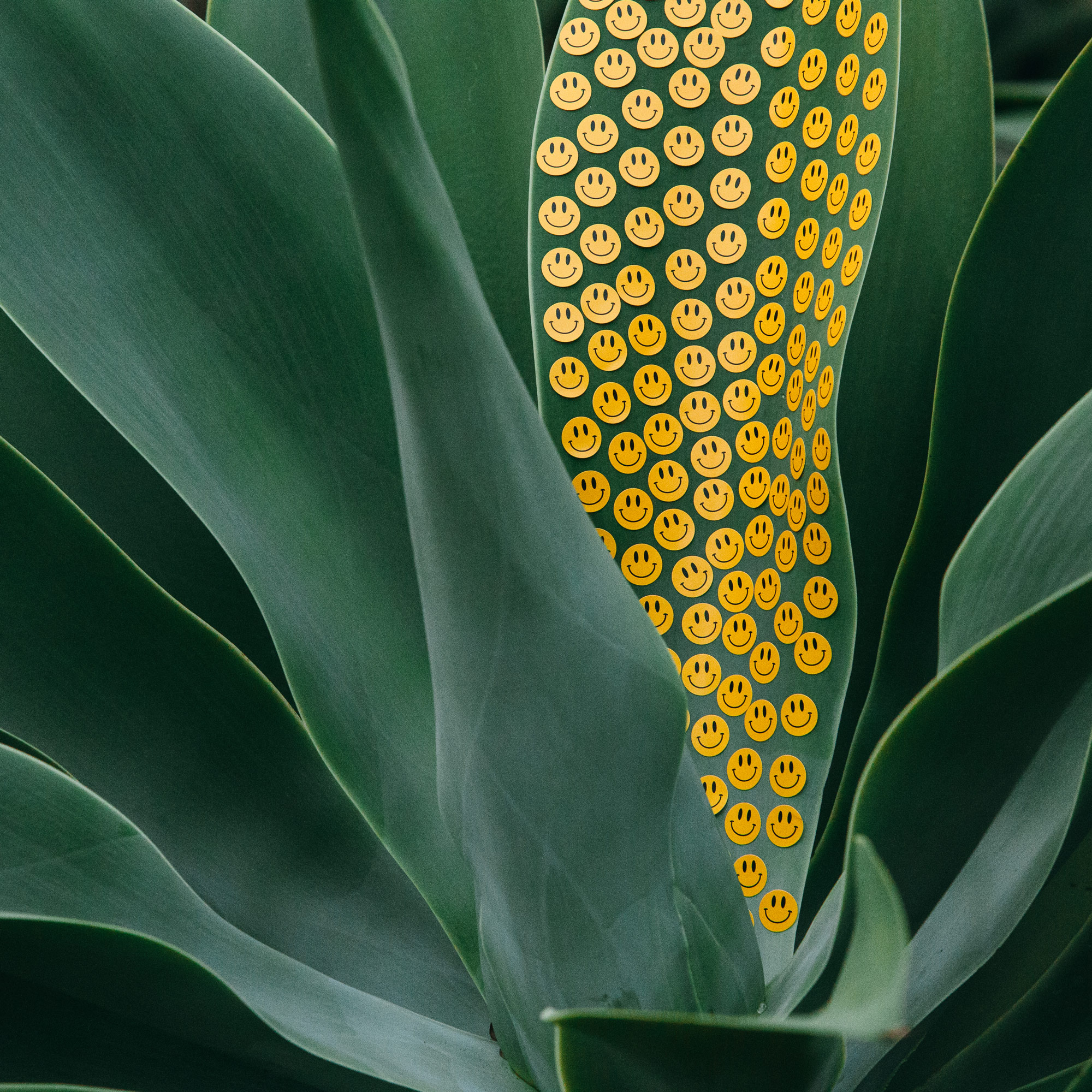
Are you hoping to do more personal work in the future? Yes. I’m constantly doing little series, and whenever I have free time I hunker down and plan new projects. I’m working on a book with a friend of mine, which is pizza-related, but we’re taking our time with it. I think it’s going to be special. Instagram is almost another job to the point where I sometimes think, “Ugh, I need to make something this week just to post online,” so I’m always thinking about that. If anything, it’s motivation for me to not be lazy and create something.
Let’s talk about LA. Was moving there a risk for you? Have you taken any big risks to move forward? I would say moving to LA was a big risk, but so much good has come from doing so. It was a jump into the unknown at first, but I’ve gotten work simply because I live here. I also have a network of people here to help me, like contacts at studios and rental houses.
How has LA influenced your creativity or style in relation to where you grew up? I grew up in the country in a little town called Plant City. It’s half an hour from Tampa, and is nothing but strawberry fields and orange groves and alligators. It’s the winter strawberry capital of the world. It’s charming and a little strange in a David Lynch sort of way. My family members all have a Southern drawl. We had a goat farm, and I played with the goats when I was little. Then my dad built a little half-pipe in our backyard, and I pretty much lived on it for the last 10 years I lived at home.
LA is so different from Florida. People assume it’s similar, but you can’t really go outside in Florida. It sounds weird, but it’s so hot and humid that it’s uncomfortable, so it’s not like you’re going to photograph your friend outside for very long, because they’re immediately drenched in sweat. (laughing) You’re always inside with the AC.
Out in LA, there’s so much going on. People come out to chase their dreams and do their thing. Being surrounded by that is very motivating because it makes you want to keep up. I think I need that motivation, otherwise I’d sit around and play video games all day.
Speaking of people chasing their dreams, what kind of legacy do you hope to live? I don’t really think about that very much. As I get older, I suppose I’d be happy continuing to create a body of work that could be looked back on or made into a book. I’d like people to look at my work and think, “This guy was passionate about making things and he never stopped.” Maybe people will look at it and be inspired or influenced in some way.
